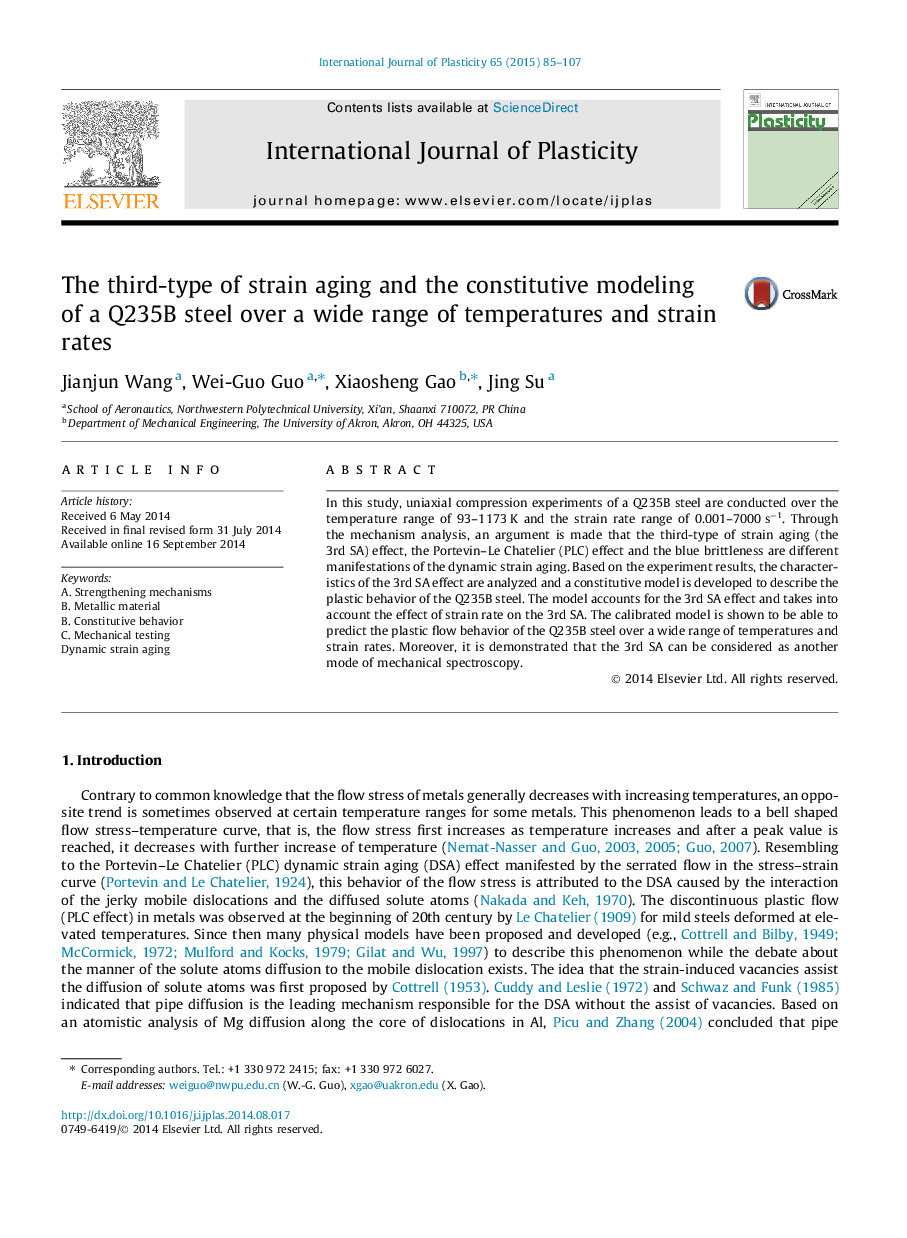| Article ID | Journal | Published Year | Pages | File Type |
|---|---|---|---|---|
| 786110 | International Journal of Plasticity | 2015 | 23 Pages |
•Uniaxial compression experiments of a Q235B steel are conducted over a wide range of temperatures and strain rates.•The characteristics of the 3rd SA effect are analyzed and a constitutive model is developed.•The constitutive model, accounting for strain rate effect on 3rd SA, is calibrated using experimental data.•An argument is made that the 3rd SA can be considered as another mode of mechanical spectroscopy.
In this study, uniaxial compression experiments of a Q235B steel are conducted over the temperature range of 93–1173 K and the strain rate range of 0.001–7000 s−1. Through the mechanism analysis, an argument is made that the third-type of strain aging (the 3rd SA) effect, the Portevin–Le Chatelier (PLC) effect and the blue brittleness are different manifestations of the dynamic strain aging. Based on the experiment results, the characteristics of the 3rd SA effect are analyzed and a constitutive model is developed to describe the plastic behavior of the Q235B steel. The model accounts for the 3rd SA effect and takes into account the effect of strain rate on the 3rd SA. The calibrated model is shown to be able to predict the plastic flow behavior of the Q235B steel over a wide range of temperatures and strain rates. Moreover, it is demonstrated that the 3rd SA can be considered as another mode of mechanical spectroscopy.
